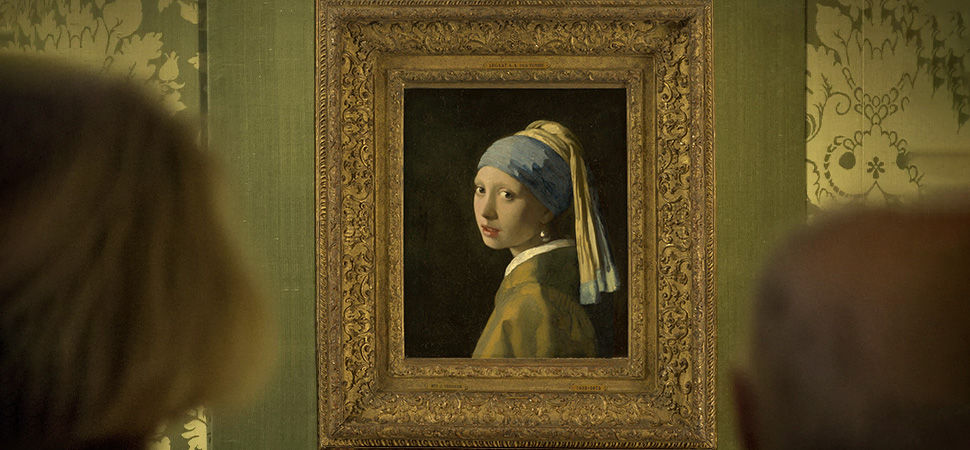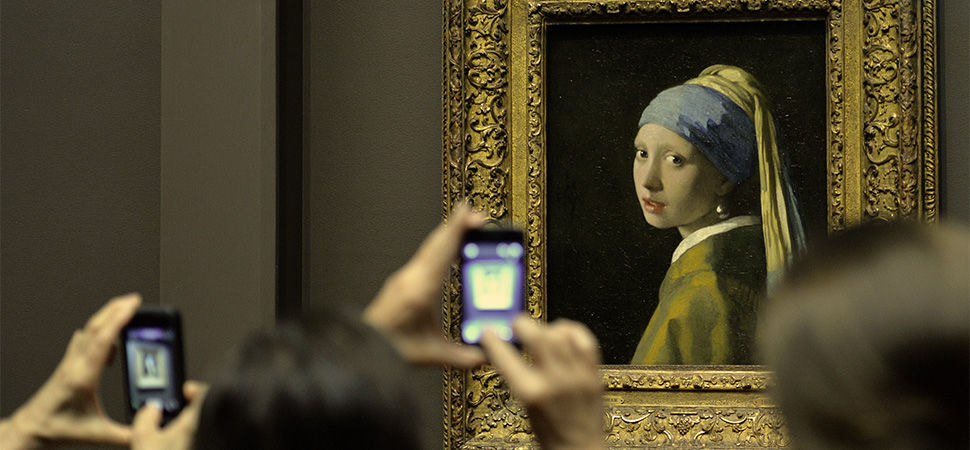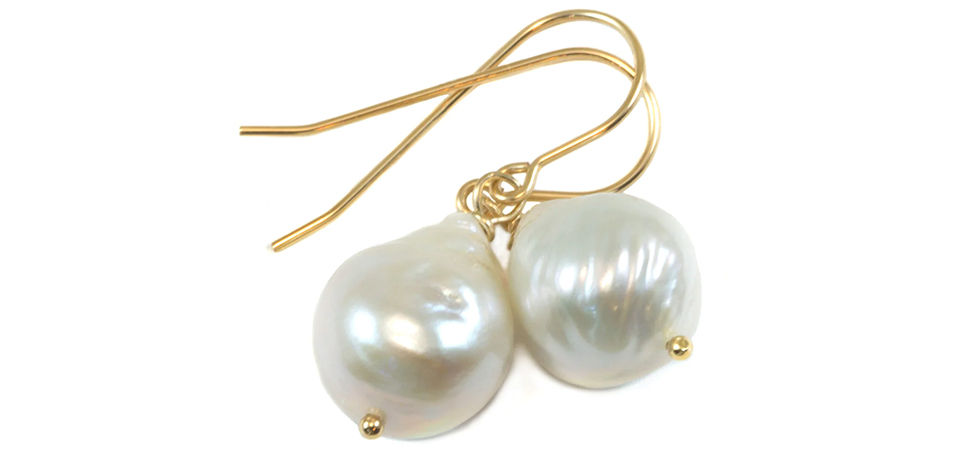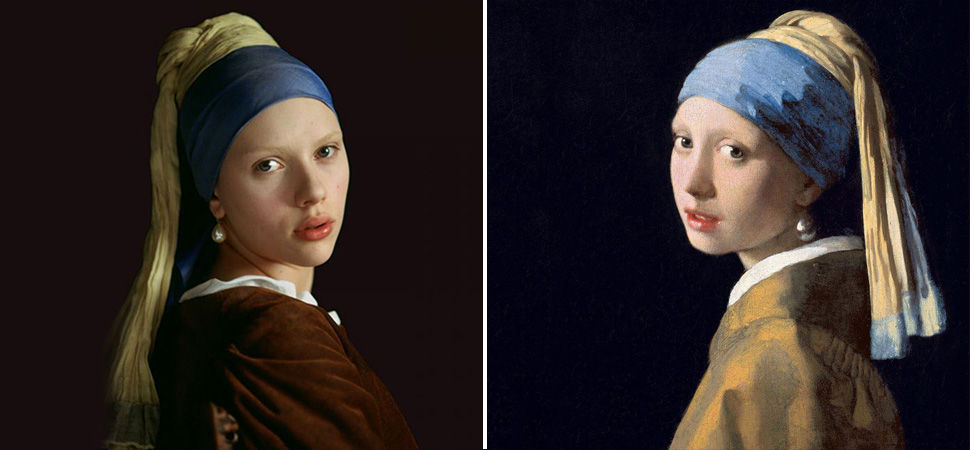
In the world of art, few paintings hold the enigmatic allure and timeless beauty as Johannes Vermeer’s “Girl with a Pearl Earring.” Who thought that minimalist jewelry like a pearl earring would gain so much fame? Created in the mid-17th century, this masterpiece continues to captivate audiences worldwide through inspiring novels, films, and endless speculation. But what lies behind the beguiling gaze of the girl in the painting?
The Golden Age of the Netherlands was a period of artistic prosperity inspired by the painting techniques of the Northern Renaissance. That period led to this amazing masterpiece, Girl with a Pearl Earring painting. Let’s uncover all there is to know about this iconic work of art.
The Artist: Johannes Vermeer

Johannes Vermeer, a Dutch painter of the Baroque period, is renowned for his mastery of light and color, meticulous attention to detail, and intimate domestic scenes. He was born in Delft, Netherlands, in 1632. Vermeer’s body of work is relatively small compared to other artists of his time, yet each piece exudes a sense of tranquility and depth that has earned him a place in art history’s greatness.
The painting was made around 1665 and is one of the greatest works of art among the other 35 made by Vermeer. He never became very famous, but this was his most honored and widely renowned piece of art. The painting was famous after its display in the National Gallery of Art of Washington D.C. at the end of the 20th century.
Girl With A Pearl Earring

This painting has more than one name. It was also honored as the “Mona Lisa of the North” and is one of Vermeer’s most celebrated works. Completed around 1665, the painting depicts a young woman wearing an exotic turban and a large pearl earring, which serves as the focal point of the composition.
The painting surely looks like a portrait, but maybe it is a Tronie. It depicts an unknown girl in exotic garments that help artists show their painting techniques. The artist back then mentioned it as it belongs to no specific time or place, just a piece of art.
Who Is The Girl?

Despite numerous theories and speculations, the true identity of the girl in the painting remains unknown. Some art historians suggest that she could be a maid or a servant in Vermeer’s household, while others believe she may have been a model explicitly hired for this painting.
There were also some assumptions made by a journalist back then saying that she might be the eldest daughter of Vermeer’s 10 daughters. The absence of any identifying attributes adds to the mystery surrounding her identity, allowing viewers to project their own interpretations onto the canvas.
The Pearl Earring

The pearl earring worn by the girl holds significant symbolic value and has been the subject of much interpretation. Some scholars argue that it represents wealth and status, while others see it as a symbol of purity and innocence. The large size of the pearl has led to speculation about its origins, with some suggesting that it may be a South Sea pearl, a rare and precious gemstone in Vermeer’s time.
Some assumed or speculated that the pearl in the painting was not real. People said that such big pearls were owned by the richest, and fake pearls were within the reach of common people during that time. Thus, while painting this art, the girl might be wearing a fake pearl.
Vermeer’s Aesthetic

Vermeer’s meticulous technique and use of light and shadow are evident in the painting. He employed a method called “sfumato,” a technique borrowed from Italian Renaissance painters, to create soft, blurred transitions between colors and tones, lending a sense of depth and realism to the painting.
The careful attention to detail, from the intricate folds of the girl’s clothing to the subtle nuances of her expression, showcases Vermeer’s mastery of his craft. The background of this painting was initially glossy green. But when it was restored, it turned black due to the breaking down of the glaze.
Legacy and Influence

Over the centuries, the Girl with a Pearl Earring painting has inspired countless interpretations and adaptations in popular culture. Tracy Chevalier’s novel of the same name, published in 1999, imagines the story behind the painting with beautiful execution.
The 2003 film adaptation starring Scarlett Johansson brought the narrative to life on the silver screen. The painting’s enduring popularity attests to its timeless appeal and the universal fascination with the mysteries of art and beauty.
The Color Theory Of Art

The color used to paint the turban in the painting was very costly. The vibrant color of the turban worn by the girl in the painting holds its own significance within the painting. The color blue has various meanings, and in this context, the color of the turban may reflect the girl’s inner qualities or evoke a sense of mystery and allure.
The contrast between the blue turban and the girl’s fair complexion accentuates her features and draws the viewer’s attention to her enigmatic gaze and the luminous pearl earring. The deliberate use of color in the painting underscores Vermeer’s meticulous attention to detail and his ability to imbue even the smallest elements with profound meaning.
Preservation Of The Painting

In recent years, efforts have been made to preserve and protect this art for future generations. The painting is kept in the Mauritshuis Museum in The Hague, Netherlands, where it is carefully monitored and maintained to prevent damage from light, humidity, and other environmental factors.
Digital technologies have also been employed to create high-resolution reproductions, allowing people around the world to experience the painting’s beauty firsthand. Mauritshuis gave the painting to the USA, Japan, and Italy for exhibitions, but once the tour was completed, they decided to never do that again and preserve the painting.
The Girl With A Pearl Earring painting remains the most iconic and mysterious painting in the history of art. Despite centuries of study and analysis, many questions about this painting remain secret. Scholars still continue to debate the identity of the girl, the significance of the pearl earring, and the possible narratives hidden within the painting.
From its beguiling subject to its masterful execution, the painting continues to captivate audiences with its timeless beauty and enigmatic allure. Whether gazing upon it in a museum or pondering its mysteries from afar, one thing is sure that this painting will forever remain an indelible symbol of the power and magic of art.




